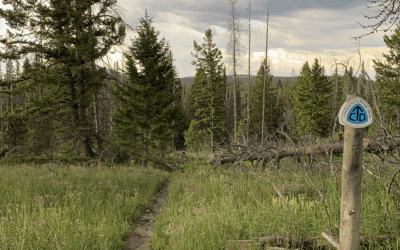President Establishes New National Monuments in Nevada and Texas
At the White House Conservation in Action Summit today, President Biden will announce major new actions to conserve and restore lands and waters across the nation, including by establishing Avi Kwa Ame National Monument in Nevada and Castner Range National Monument in Texas. These designations come after years of collaboration and engagement with locals, and particular Indigenous, making progress on the administration’s commitment to protect historically and culturally significant areas and conserve our nation’s treasured outdoor spaces.
“The designation of the Castner Range and Avi Kwa Ame National Monuments continues to build on the legacy of America the Beautiful. As the cost of the climate crisis becomes more clear, ensuring the conservation and connectivity of these biologically diverse, culturally significant areas becomes ever more important. By protecting these special places, the administration is elevating the voices of the local communities, who have led these protection efforts and who stand the most to benefit from the protection of these places they call home, more access to connect to these landscapes, and greater opportunities to connect with one another in the outdoors. We hope to see even more momentum for this legacy of community-led conservation continue to build, to ensure that future stewardship of landscapes like these preserves the history of the land while creating a path forward for all to enjoy the benefits of protected lands and waters.” – Teresa Martinez (she/hers/ella), Executive Director of the Continental Divide Trail Coalition
Castner Range
Located on Fort Bliss, Castner Range served as a training and testing site for the U.S. Army during World War II, the Korean War, and the Vietnam War. The Army ceased training at the site and closed Castner Range in 1966. Once the area is sufficiently remediated to be safe for public access, Castner Range will offer unique opportunities for the El Paso community to experience, explore, and learn from nature. President Biden is committed to expanding access to nature for underserved communities that have historically had less access to our public lands, like those bordering Castner Range. Protecting Castner Range connects the area with the Franklin Mountains State Park, creating continuous habitat for wildlife and improved public access for outdoor recreation. Castner Range also hosts significant cultural sites documenting the history of Tribal Nations, including the Apache and Pueblo peoples and the Comanche Nation, Hopi Tribe, and Kiowa Indian Tribe of Oklahoma. Full White House Fact Sheet
Honor Avi Kwa Ame
Avi Kwa Ame is considered to be among the most sacred places on Earth by the Mojave, Chemehuevi, and some Southern Paiute people. It is also important to other Tribal Nations and Indigenous Peoples including the Cocopah, Halchidhoma, Havasupai, Hopi, Hualapai, Kumeyaay, Maricopa, Pai Pai, Quechan, Yavapai, and Zuni Tribes. Its scenic peaks include Avi Kwa Ame (Spirit Mountain), which is designated as a Traditional Cultural Property on the National Register of Historic Places in recognition of its religious and cultural importance. The area is also home to the one of the world’s largest Joshua tree forests, and provides continuous habitat or migration corridors for species such as the desert bighorn sheep, desert tortoise, and Gila monster. Full White House Fact Sheet
What Is A National Monument?
A National Monument is a site or landscape protected by a U.S. President by the powers given to them under the Antiquities Act. The Antiquities Act has been used by 18 presidents, designating over 158 National Monuments across North America since the Act was passed by Congress in 1906. The Antiquities Act gives presidents broad authority to designate national monuments, but only Congress has the power to modify or rescind monuments. The two National Monuments that you can find while traversing the CDT are the El Malpais National Monument in New Mexico and the Camp Hale – Continental Divide National Monument in Colorado.
Background on Antiquities Act Designations
President Theodore Roosevelt first used the Antiquities Act in 1906 to designate Devils Tower National Monument in Wyoming. Since then, 18 presidents of both parties, including recent Presidents Trump, Obama, G.W. Bush, and Clinton have used this authority to protect unique natural and historic features in America, including the Grand Canyon, the Statue of Liberty, and Colorado’s Canyons of the Ancients.
In addition to designating Avi Kwa Ame National Monument, today the President is also taking action to establish Castner Range National Monument in Texas. These are President Biden’s second and third new monument designations, following the creation of the Camp Hale-Continental Divide National Monument in Colorado last fall.



